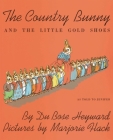Our brief beach vacation was lovely and restorative. I did no kind of work at all, and finally gave myself time to read Monsters of Men, the final book in the Chaos Walking trilogy you introduced me to last year. What a final book! Patrick Ness does an extraordinary job of presenting characters who grow in complexity throughout the series, and his vision of the New World planet he's created is subtly and brilliantly observant about our own world. Like the best science fiction, these books made me think more deeply about real life, the workings of society, and the machinations of people in power. They're unsparing books, but so, so good. I am a total convert.
So much to respond to! I can't believe we haven't touched on the Ahlbergs yet either. Each Peach Pear Plum was one of Eleanor's early I-Spy favorites, and actually introduced her to some fairy tale and nursery rhyme characters for the first time. We didn't know Peek-A-Boo! until you sent it recently for Isabel, but it is one of her absolute favorite books right now. In fact, during her long nap refusal on our plane ride home this morning, she spent quite some time clutching it to her chest and saying, "My Peek-A-Boo!" Usually, her interactions with the book are far more, well, interactive. She loves to turn the pages with the peepholes in them, calling out "Peek-A-Boo!", and there are small details on almost every page that she'll comment on: every time the dog appears, of course, but also a bird on the roof of the garage, the baby's rubber duck on the bath page, a small margin drawing of a car. On the page with Dad putting his finger to his mouth to motion for silence, Isabel puts her finger up too, for a "Shh." Jeff and I are fascinated by the narrative running under this book -- it appears to be WWII-era London, with Dad bringing in a bucketful of coal, and the general sense of happy crowdedness throughout. But is Dad going off to fight at the baby's bedtime? There he is, kissing baby goodnight in full uniform, which he hasn't been in throughout. Do you get what's going on in that last family picture?
I'd love to post next time about Robert McCloskey, both Make Way for Ducklings and Blueberries for Sal. But Easter approaches, and through conversations with a few friends I've recently come to realize that not everyone in the world knows about my absolute favorite Easter book of all time.
 I grew up with The Country Bunny and the Little Gold Shoes, by DuBose Heyward. It's a surprisingly feminist and anti-racist children's book, especially for having been published in 1939. Then again, Heyward was the author of Porgy, the novel on which Porgy and Bess is based, and apparently wrote a lot of the lyrics to that great operetta as well.
I grew up with The Country Bunny and the Little Gold Shoes, by DuBose Heyward. It's a surprisingly feminist and anti-racist children's book, especially for having been published in 1939. Then again, Heyward was the author of Porgy, the novel on which Porgy and Bess is based, and apparently wrote a lot of the lyrics to that great operetta as well.The Country Bunny is the story of a little brown girl bunny who wants to grow up to be one of the five Easter Bunnies who hop all over the world bringing Easter baskets to children. The male bunnies, white and brown, laugh at her and tell her she can't possibly be an Easter Bunny -- she can't be swift or kind or wise enough, and she should go home and have babies. At first, that's what she does, 21 of them (that's the line-up in Marjorie Flack's inspired cover picture). Talk about absent fathers; the father here isn't even mentioned. But the Country Bunny raises her children beautifully, and trains them to do all the jobs that need doing around the house: two mend clothes, two cook, two wash dishes, two paint pictures, two play music, and on in a nice combination of the practical and the artistic. When they're old enough, the Country Bunny brings them with her to the next Easter Bunny auditions, and the wise old Grandfather Bunny sees her uber-competent mothering skills as evidence of her readiness to be an Easter Bunny herself. She is chosen, and joins four tall male bunnies in delivering Easter baskets.
The message of equality gets a little more complicated toward the end. The old wise Grandfather Bunny tells the Country Bunny he's saved the most important egg for her to deliver: a gorgeous iced confection of a thing with a little glass window in it through which you can see a tiny diorama. The egg is for a little boy who lives on top of a steep hill, and who has been very ill but uncomplaining for a whole year. The hill is impossible to climb; the Country Bunny tries her best but falls, hurting herself, and dawn is approaching.... Enter Grandfather Bunny, with the magic gold shoes as reward for her effort and bravery. She springs up the hill, leaves the egg by the (extremely blond and rosy-cheeked) ill boy, and springs back down in time to bring Easter baskets to her own children.
My feminist, post-colonialist self is not utterly satisfied here, but the whole of the story is worth it. What stuck with me most as a kid were all those little bunnies, fulfilling their bunny duties happily and well in Flack's drawings. We'll be reading my old copy this weekend, up at my parents' place, and speculating about whether Eleanor and Isabel's Easter Bunny is a girl.
Love, Annie

No comments:
Post a Comment